When choosing the correct length for your windows, a fundamental question often arises: Should curtains reach the floor? The curtains can dramatically influence the overall aesthetics of a space and are more than fabric panels. The length of your curtains is crucial in achieving a polished, cohesive look.
Whether or not your curtains touch the ground isn’t arbitrary; it significantly impacts their visual appeal and function. Let’s find out if curtains should touch the ground.
Should Curtains Touch the Floor?
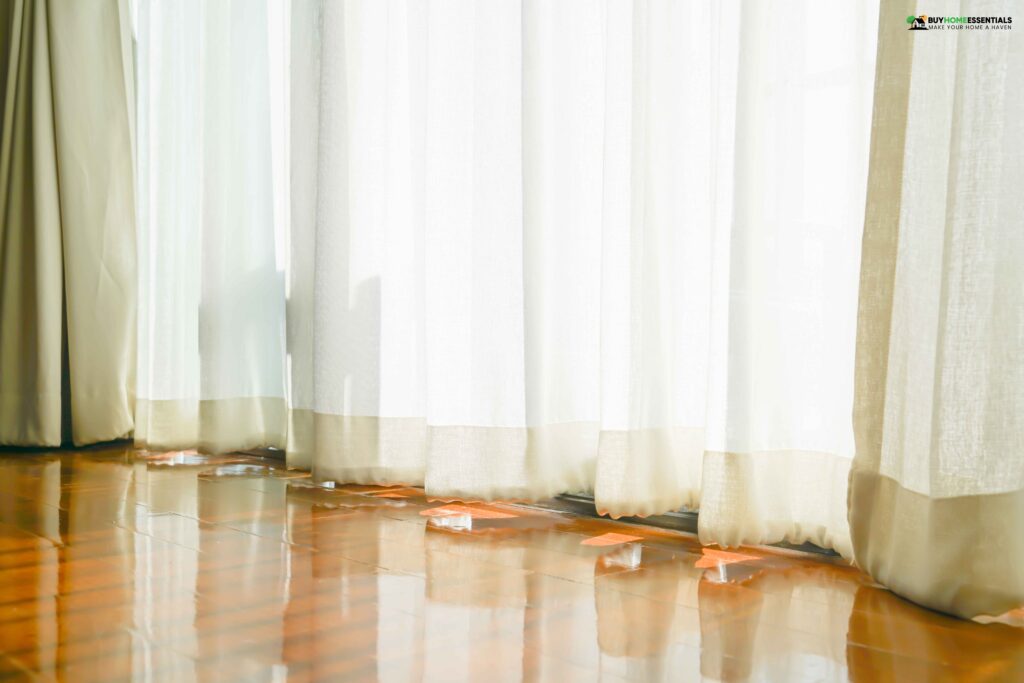
In interior design, curtains can make a massive difference in a room’s looks and feel. Deciding whether curtains should gracefully touch the floor or be styled differently is essential. Each choice has its visual impact and can significantly alter the atmosphere of a room.
When curtains touch the floor, they create an elegant and tailored look. In formal settings, this style adds a sense of grandeur and sophistication. The floor-length curtains can make a room more extensive and spacious by visually elongating windows.
However, it is also essential to consider the practical aspects and dynamics of the room. Sometimes, having curtains above the floor or slightly breaking at the floor may be more appropriate. This option will prevent dust and dirt from collecting on the curtain fabric and is practical in high-traffic areas.
Factors Influencing Curtain Length Choice
Choosing the right curtain length for your space is more than an aesthetic decision. To make sure it works with the room and serves its purpose, you need to consider several factors. Such as:
1. Room Type and Functionality
The room’s function plays a significant role in determining the curtain length. For example, floor-length curtains often add elegance to a formal dining or living room. Alternatively, curtains that brush the window sill or hang slightly below might be more useful in a kitchen or bathroom.
2. Ceiling Height
Your ceiling height can influence the length of your curtains. Using floor-length curtains can give the illusion of more space in rooms with high ceilings. You might want curtains just above the floor for rooms with lower ceilings to avoid looking crowded.
3. Window Size and Placement
Take into account the size and placement of your windows. Floor-length curtains are perfect for large windows or those higher on the wall. Floor-length curtains might overwhelm smaller windows, so shorter curtains might work better.
4. Furniture and Design Aesthetics
The style and placement of your furniture also impact the curtain length. When furniture is placed near windows, curtains may be necessary to clear the furniture. Furthermore, your curtain length should reflect the overall design aesthetic of your room, whether it’s modern, traditional, or eclectic.
These factors will help you choose curtain lengths that suit your living space’s style and functionality.
Common Curtain Length Options
Choosing the right curtain length depends on your living space’s aesthetic and functionality. Curtain lengths can complement different design styles and offer different visual effects. These are some standard curtain lengths and how they look:
Curtains Just Below the Window Sill
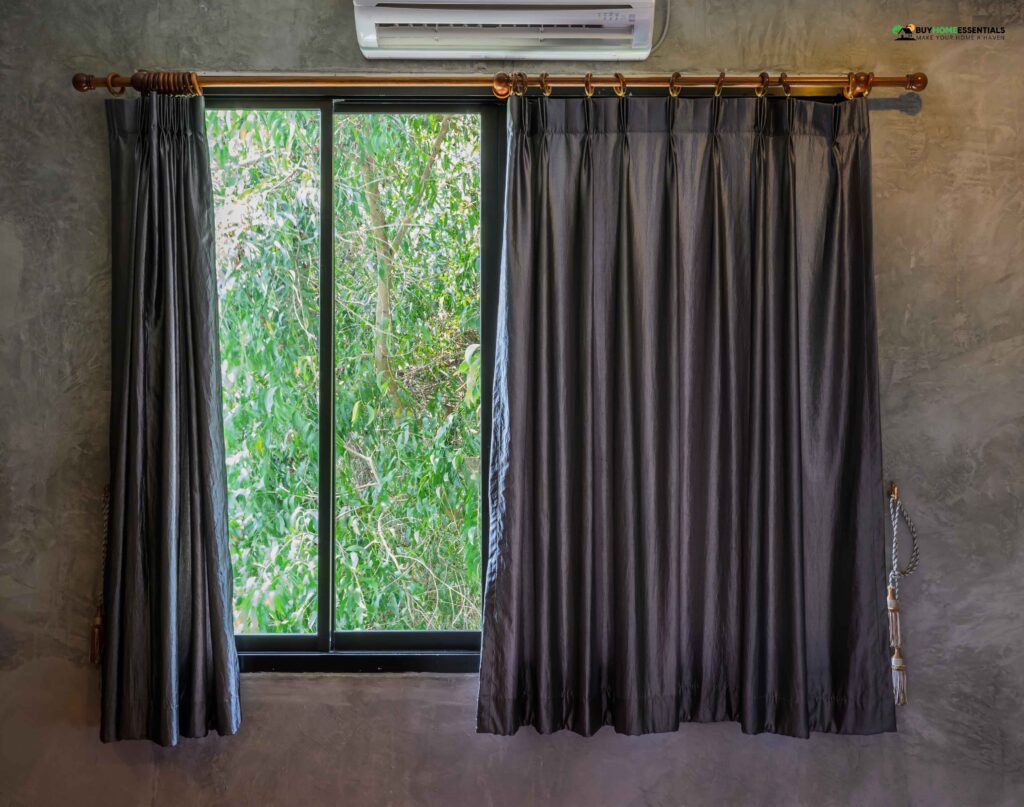
A curtain that ends just below the window sill creates a modern and clean appearance. In addition to allowing ample light, this option adds a touch of style to your window. It’s an excellent choice for kitchen or bathroom windows.
Curtains Just Above the Floor
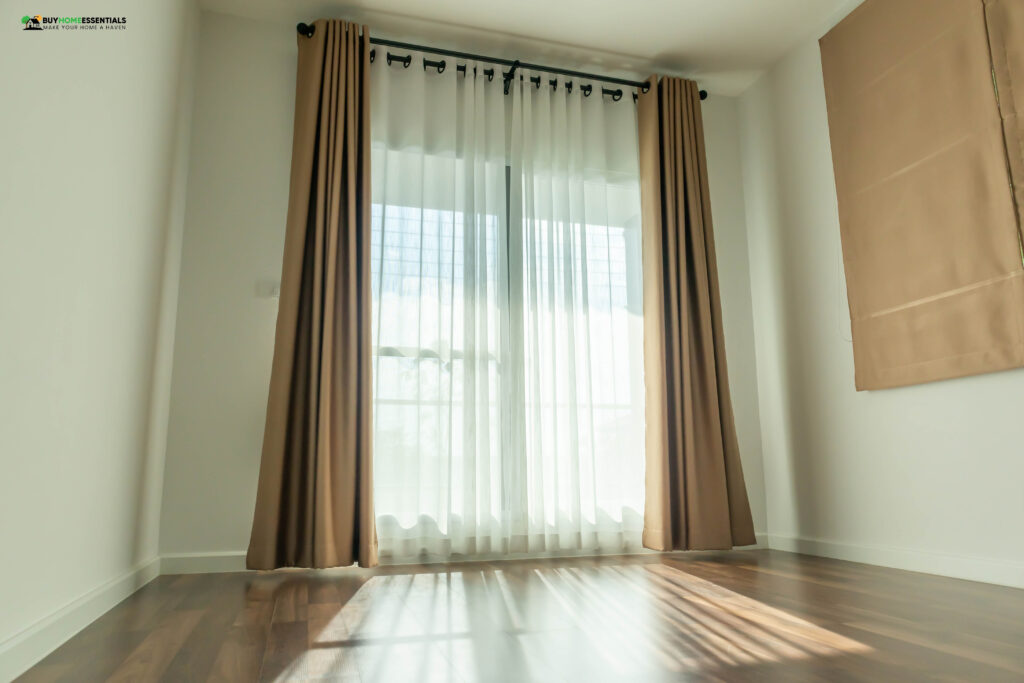
Using curtains hanging above the floor creates a classic, tailored look. It avoids the accumulation of dust or dirt on the fabric because of its practical length. It is a popular choice in living rooms, bedrooms, and dining areas.
Curtains Touching the Floor
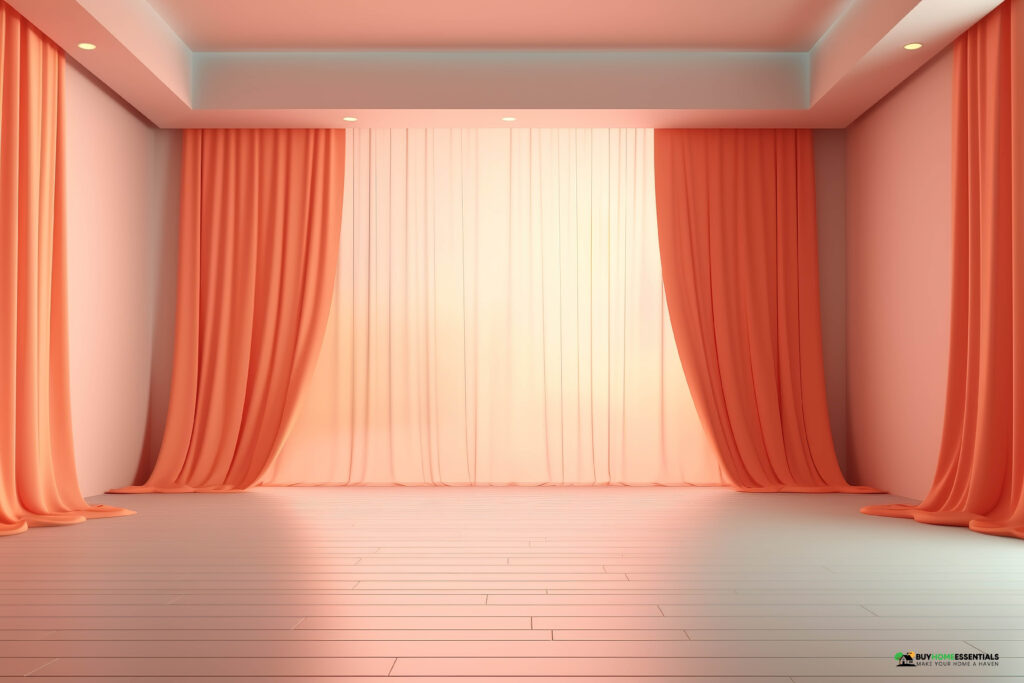
Curtains that reach the floor exude sophistication and elegance. Visually elongating windows make the room seem taller and more spacious. This option is ideal for a luxurious ambiance for formal living rooms, dining rooms, and bedrooms.
Pooling Curtains
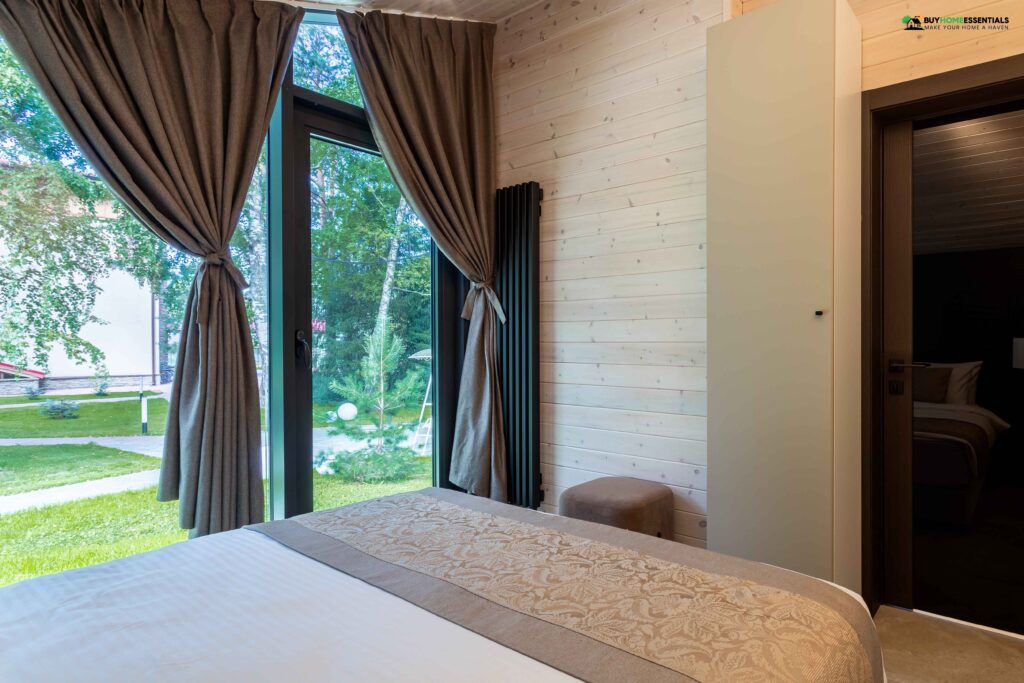
With pooling curtains, the fabric gathers on the floor to create a lavish and dramatic effect. The style looks good in formal or opulent settings, adding a sense of luxury.
Different Curtain Styles
Curtains come in various styles, each with its unique design and function. The best window treatment for your space will depend on your chosen curtain style. These are some of the most popular curtain styles:
1. Single Panel Curtains
Typically, single-panel curtains consist of one panel of fabric per curtain rod. Their versatility and ease of use make them ideal for smaller windows or combined with other window treatments. Their appearance is usually simple and contemporary.
2. Double Panel Curtains
Most curtains come in the form of double panel curtains or pair curtains. They consist of two panels, one on each side of the window. It provides a balanced and traditional look and allows for various hanging options.
3. Blackout Curtains
A blackout curtain blocks out light and provides privacy as well as insulation. These drapes are ideal for bedrooms, media rooms, and other spaces that require privacy and light control. These curtains often have a thick lining to achieve their light-blocking properties.
4. Window Scarves & Valances
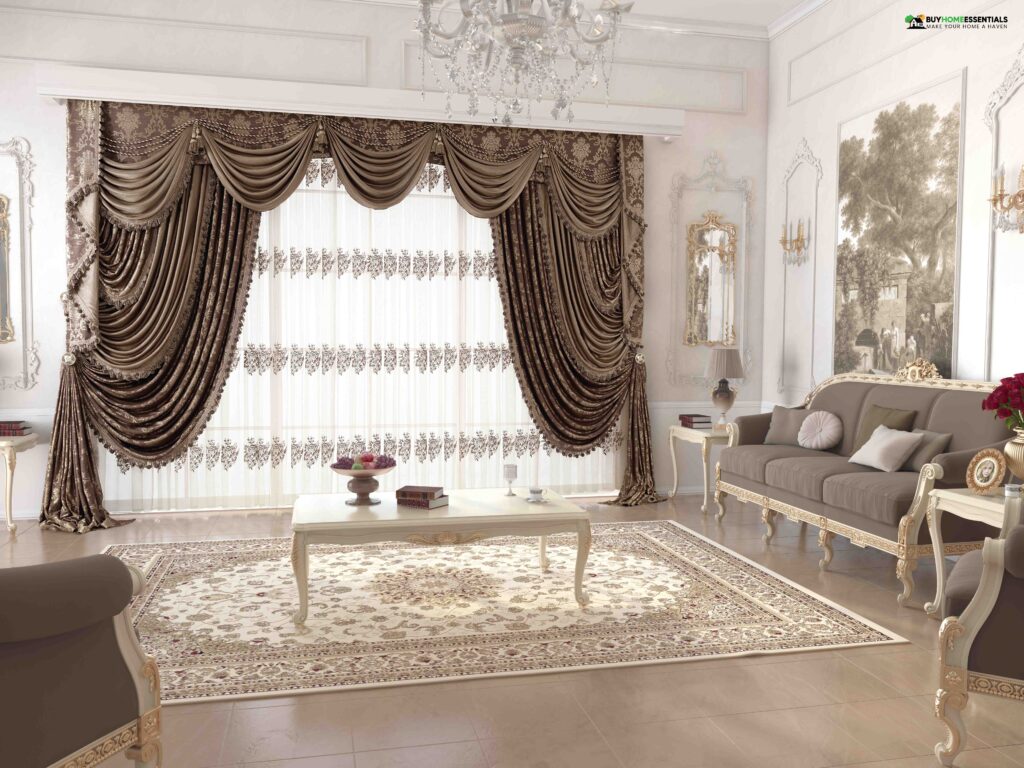
Fabric scarves and valances drape over the top of windows as decorative pieces. They aim to add style and elegance to a room without covering the whole window. For a layered look, these are often paired with other curtain styles.
5. Window Tier Curtains
Window-tier curtains are typically short curtains that cover only the lower part of the window. They offer privacy while allowing natural light to enter. They are commonly found in bathrooms and kitchens.
6. Window Drapery Sets
Drapery sets are complete window treatments that include curtains, valances, and tiebacks. Their coordinated designs create a cohesive look and provide a comprehensive window solution.
7. Sheer Curtains
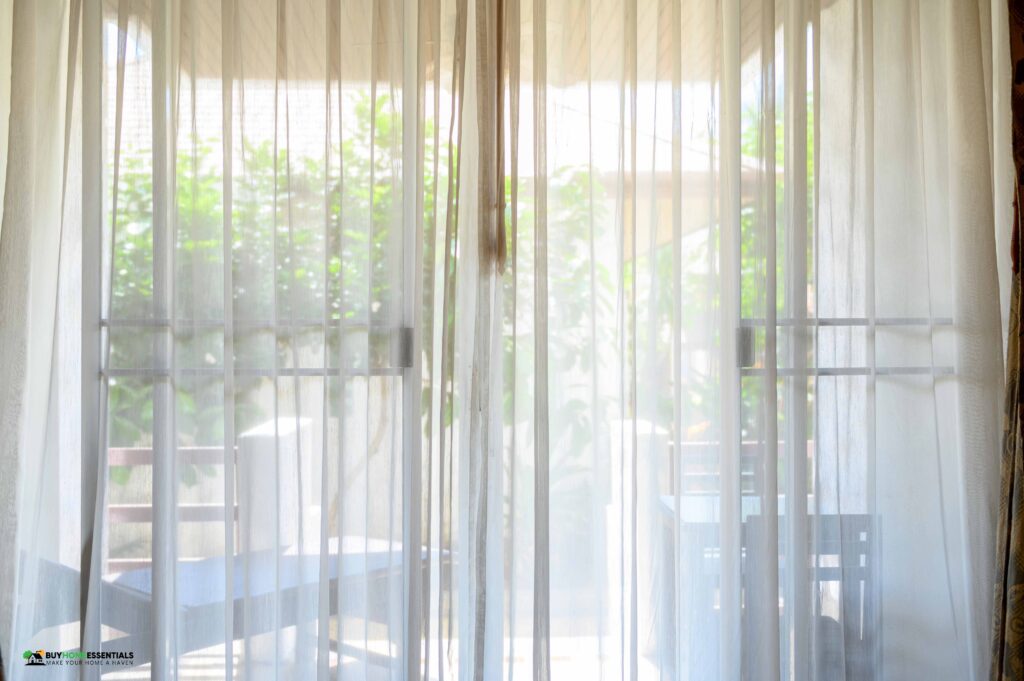
Light filters through sheer curtains made from lightweight and transparent fabrics. They create an airy and delicate ambiance while offering minimal privacy. A sheer curtain is often combined with another style for a layered look.
When selecting the perfect window treatment, understanding these curtain styles will help.
Curtain Length Guide For Different Styles
As curtains serve aesthetic and practical purposes, one size doesn’t fit all. Knowing the correct length for different types of curtains is key to getting the look you want. You can use this as a quick reference guide for curtain lengths:
- Single Panel: Opt for a floor-length curtain for a sleek and elegant look.
- Double Panel: The length of double panels will depend on the window size and your preferred style. Consider options like brushing the floor or ending just above it, depending on the design aesthetic.
- Blackout Curtains: Floor-length blackout curtains provide optimal light blocking and privacy.
- Window Scarf, Tier, or Valance: Ensure that these curtain types are cut to the appropriate size for the window, maintaining a proportionate and pleasing appearance.
- Drapery Sets: The best drapery sets are custom-sized to fit the window dimensions and overall design scheme.
- Sheer Panel: Add an ethereal elegance with floor-length sheer panels that gently drape.
While these guidelines provide a starting point, there are no rigid rules regarding whether curtains should touch the floor. The ideal curtain length depends heavily on your taste and style. Adapt these guidelines to suit your tastes and experiment with what complements your space.
FAQs
Do curtains need to drop to the floor?
Curtains don’t need to drop to the floor. Curtain length depends on your design preferences, aesthetics, and desired functionality. Curtains that touch the floor create a classic, elegant look and visually elongate windows. However, curtains that end just above the floor or at the window sill look modern and clean. It’s ultimately up to you to decide what length is best for your space and style.
How high should curtains be hung?
Window curtains should generally be hung at a height that maximizes the room’s visual impact. It’s a good idea to mount the curtain rod or track approximately 4 to 6 inches above the window frame. As a result, the curtains appear taller, and more natural light enters.
Can short curtains look good?
Indeed, short curtains look good in specific spaces and can be stylish. You can create a modern and casual look with short curtains, either above the window sill or mid-length. They’re great for smaller rooms, kitchens, or bathrooms where you want a minimalistic, functional look. With short curtains, you’ll get plenty of light into the room, and it’ll feel more prominent. Also, they give the design a clean, uncluttered appearance, adding a touch of contemporary charm.
Related: How to Dress a Window Without Curtains
The Takeaway
Home decor isn’t complete without curtains. Whether curtains should touch the floor is subjective, depending on your tastes. It’s essential to understand what influences curtain length, explore various styles, and know how to hang them.
Whether you prefer a classic or a more modern look, the key is to design a space that expresses your personality. So, try different styles, and let your curtains tell your story.





